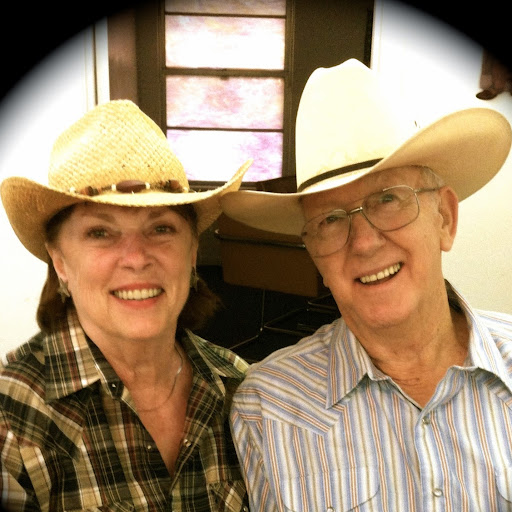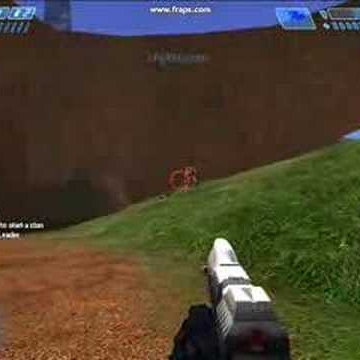Kenneth R Short
age ~43
from Port Jefferson Station, NY
- Also known as:
-
- Kenneth R Vshort
- Short Short
- Phone and address:
-
39 Colony Rd, Prt Jefferson Station, NY 11776
6314735199
Kenneth Short Phones & Addresses
- 39 Colony Rd, Port Jeff Sta, NY 11776 • 6314735199
- Port Jefferson Station, NY
- Ridge, NY
- North Brunswick, NJ
- Ronkonkoma, NY
- Camp Lejeune, NC
- Shirley, NY
- Shoreham, NY
- North, NC
- 3 Marc Dr, Ridge, NY 11961
Us Patents
-
Photo-Thermal Epilation Apparatus With Advanced Energy Storage Arrangement
view source -
US Patent:6461348, Oct 8, 2002
-
Filed:Aug 27, 1999
-
Appl. No.:09/384122
-
Inventors:Howard S. Bertan - Jericho NY 11753
Kenneth L. Short - Setauket NY 11733 -
International Classification:A61B 1818
-
US Classification:606 9, 315200 A, 315214, 315241 R, 315244
-
Abstract:A photo-thermal epilation apparatus enables the efficient delivery of a high energy light pulse of a sufficiently short duration to a selected follicle to effect permanent hair removal. The apparatus includes a flash lamp powered by a power supply module having an energy storage module interposed between the power supply module and the flash lamp. The energy storage. module, which has an output or network impedance matched to the flash lamp, produces a flattened and extended current pulse that is coupled from the energy storage module to the flash lamp in order to the energize the flash lamp to produce the desired high energy light pulse. An optical system, which includes a tapered needle-less probe, is included to receive the light pulse produced by the flash lamp and efficiently deliver the light pulse to a selected hair follicle to effect the photo-thermal epilation of the associated growth support tissue.
-
Means And Method For Energizing A Flash Lamp
view source -
US Patent:6719753, Apr 13, 2004
-
Filed:Jun 22, 2002
-
Appl. No.:10/177971
-
Inventors:Howard Stephen Bertan - Jericho NY 11753
Kenneth Lawrence Short - Setauket NY 11733 -
International Classification:A61B 1818
-
US Classification:606 9, 315200 A, 315214, 315241 R, 315244
-
Abstract:A method and structure for energizing a flash lamp for producing a high energy light pulse, with the flash lamp energized by a flattened and extended current pulse. The method includes collecting and storing energy for delivery to the flash lamp when triggered. A triggering of the flash lamp resulting in a delivering of the collected and stored energy to the flash lamp in the form of an amplitude controlled (flattened) and duration controlled (extended) current pulse.
-
Methods Of Operating A Photo-Thermal Epilation Apparatus
view source -
US Patent:6916315, Jul 12, 2005
-
Filed:Oct 7, 2002
-
Appl. No.:10/265965
-
Inventors:Kenneth Lawrence Short - Setauket NY, US
Howard Stephen Bertan - Jericho NY, US -
International Classification:A61B018/18
-
US Classification:606 9, 606 10, 606 12, D14383, D14388, 705 72
-
Abstract:Methods of operating and logging the usage of a photo-thermal epilation apparatus provide for the logging of usage information as the apparatus is employed for each epilation session. The operational information may be applied to determine when calibration is required, if additional usage funds must be paid before additional sessions may be conducted, and or when and who conducted epilation sessions with the apparatus. A usage log may be stored within a database that contains entries of operation or usage information. Each usage log entry may include information associated with a client, an operator, as well as other useful information related to the usage of the apparatus. The apparatus may further be configured to communicate with at least one remote computer. The communication with the remote computer may be included for enabling operation and usage of the apparatus to be metered, monitored, and or purchased in pre-determined usage allotments.
-
Survivable Call Box
view source -
US Patent:20040105399, Jun 3, 2004
-
Filed:Nov 20, 2002
-
Appl. No.:10/301350
-
Inventors:Thomas Robertazzi - Mastic NY, US
Sangjin Hong - South Setauket NY, US
Kenneth Short - Setauket NY, US -
International Classification:H04B007/00
-
US Classification:370/310000
-
Abstract:A robust radio device and method of communication capable of performing in extreme environments such as during a disaster are disclosed. The robust radio device and method of communication include a radio enclosed in a durable enclosure which is capable of participating in an ad-hoc network.
-
Method Of Reducing Critical Current Density Of Oxide Superconductors By Radiation Damage
view source -
US Patent:50533835, Oct 1, 1991
-
Filed:Mar 29, 1988
-
Appl. No.:7/174577
-
Inventors:Kenneth T. Short - New Providence NJ
Alice E. White - New Providence NJ -
Assignee:AT&T Bell Laboratories - Murray Hill NJ
-
International Classification:B05D 512
B05D 306 -
US Classification:505 1
-
Abstract:The critical current density J. sub. c of a superconductive oxide film can be tailored, without substantial change in the critical temperature T. sub. c (R. dbd. 0), by introduction of radiation damage into the superconductor. Exemplarily, this is done by exposure to energetic (e. g. , 1 MeV) ions. The ability to tailor J. sub. c permits optimization of SQUIDS and other thin film devices, and makes it possible to produce superconductive interconnects that comprise "fuses" or current limiters.
-
Method Of Making An Article Comprising A Buried Sio.sub.2 Layer
view source -
US Patent:47496606, Jun 7, 1988
-
Filed:Nov 26, 1986
-
Appl. No.:6/935273
-
Inventors:Kenneth T. Short - New Providence NJ
Alice E. White - New Providence NJ -
Assignee:American Telephone and Telegraph Company, AT&T Bell Laboratories - Murray Hill NJ
-
International Classification:H01L 21265
H01L 2120 -
US Classification:437 24
-
Abstract:We have discovered that high quality subcritical SIMOX silicon-on-insulator wafers can be produced by a method that comprises a randomizing implant followed by an appropriate heat treatment. In a preferred embodiment, the inventive method comprises, in succession, a subcritical oxygen implant (nominal wafer temperature 1200. degree. C. ) anneal, a randomizing implant (. about. 5. times. 10. sup. 14 Si/cm. sup. 2, nominal wafer temperature
-
Semiconductor Device Comprising A Silicide Layer, And Method Of Making The Device
view source -
US Patent:51224798, Jun 16, 1992
-
Filed:Apr 11, 1991
-
Appl. No.:7/683891
-
Inventors:Sarah A. Audet - Bridgewater NJ
Conor S. Rafferty - Basking Ridge NJ
Kenneth T. Short - New Providence NJ
Alice E. White - New Providence NJ -
Assignee:AT&T Bell Laboratories - Murray Hill NJ
-
International Classification:H01L 2144
-
US Classification:437200
-
Abstract:Disclosed is a method of making a Si-based semiconductor device comprising a contact region that comprises a thin (exemplarily less than 50 nm), substantially uniform silicide layer. The silicide preferably is CoSi. sub. 2 or TiSi. sub. 2. The method comprises implantation of the appropriate metal ions into a Si body, the dose and the body temperature selected such that substantially complete amorphization of the implant volume results. Subsequently, the Si body is subjected to an annealing treatment that results in recrystallization of the implant volume and formation of the silicide layer. The layer extends to the surface of the body and contains essentially all of the implanted metal ions. The invention can advantageously be used in conjunction with extremely shallow junctions, such as will be of interest in short (e. g. ,
-
Method Of Making A Heteroepitaxial Structure By Mesotaxy Induced By Buried Implantation
view source -
US Patent:48164216, Mar 28, 1989
-
Filed:Nov 24, 1986
-
Appl. No.:6/934160
-
Inventors:Robert C. Dynes - Summit NJ
Kenneth T. Short - New Providence NJ
Alice E. White - New Providence NJ -
Assignee:American Telephone and Telegraph Company, AT&T Bell Laboratories - Murray Hill NJ
-
International Classification:H01L 21265
H01L 2128 -
US Classification:437 26
-
Abstract:Disclosed is a technique, termed "mesotaxy", for producing a heteroepitaxial structure comprising a layer of single crystal second material embedded in, and epitaxial with, a single crystal first material matrix. Mesotaxy comprises implantation of at least one chemical species (e. g. , Co, Ni, Cr, Y or Mg) into a single crystal body (typically a semiconductor, e. g. , Si or Ge) such that a buried layer rich in the implanted species is formed, and heat treating the implanted body such that a buried stoichiometric compound layer (e. g. , CoSi. sub. 2) is formed. Exemplarily, 3. multidot. 10. sup. 17 /cm. sup. 2 200 keV Co ions are implanted into (100) Si nominally at 350. degree. C. , followed by a heat treatment that consists of 1 hour at 600. degree. C. and 30 minutes at 1000. degree. C. The resulting buried CoSi. sub.
Name / Title
Company / Classification
Phones & Addresses
BRADKEN SPORTS APPAREL & EQUIPMENT LLC
ALL SPORTS APPAREL LLC
Manager
Alchemy Agents LLC
Nonclassifiable Establishments
Nonclassifiable Establishments
81 Vesey St, Newark, NJ 07105
Isbn (Books And Publications)


Embedded Microprocessor Systems Design: An Introduction Using the Intel 80C188EB
view sourceAuthor
Kenneth L. Short
ISBN #
0132494671



Hollywood's Overseas Campaign : The North Atlantic Movie Trade, 1920-1950
view sourceAuthor
Kenneth Short
ISBN #
0521415667

U. S. Television News and Cold War Propaganda, 1947-1960
view sourceAuthor
Kenneth Short
ISBN #
0521594154
Resumes

Kenneth Short
view source
Kenneth Short
view source
Kenneth Short
view source
Kenneth Short
view source
Kenneth Short
view sourceLocation:
United States

Architectural Historian At Howard County Government
view sourceLocation:
United States
Industry:
Government Administration

Kenneth Short
view sourceLocation:
United States

Kenneth Short
view source
Kenneth Short
view source
Kenneth Short
view source
Kenneth Short
view source
Kenneth Short
view source
Kenneth Short
view source
Kenneth Short
view source
Kenneth Short
view sourceClassmates

Kenneth Short
view sourceSchools:
Hindman High School Hindman KY 1966-1970
Community:
Delano Martin, Sylvia Slone, Terry Conley, Lillian Combs, Estill Hicks, Coleen Conley

Kenneth Short
view sourceSchools:
Jones Fork Elementary School Mousie KY 1998-2002
Community:
Delano Martin, Lillian Combs, Sue Maggard, Jewell Dobson

Kenneth Short
view sourceSchools:
Comeaux High School Lafayette LA 1965-1969

Kenneth Short
view sourceSchools:
J.M. Tate High School Pensacola FL 1968-1972
Community:
Clay Heist

Kenneth Short
view sourceSchools:
Somerset High School Somerset IN 1949-1953

Kenneth Short
view sourceSchools:
Mary E. Griswold Elementary School Kensington CT 1987-1991

Kenneth Short
view sourceSchools:
Lanier High School Jackson MS 1999-2003
Community:
Debra Robinson, Amanda Johnson

Kenneth Short
view sourceSchools:
Candor Central High School Candor NY 1974-1977
Myspace
Youtube
Googleplus

Kenneth Short
Work:
Retired
Tagline:
Just an old fart that was in the Navy during Viet Nam

Kenneth Short

Kenneth Short

Kenneth Short

Kenneth Short

Kenneth Short

Kenneth Short
Flickr
Get Report for Kenneth R Short from Port Jefferson Station, NY, age ~43













